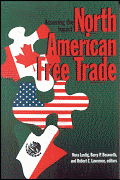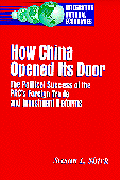Studies in this week’s Hutchins Roundup find that people value their time at about 75% of the average after-tax wage, macroprudential policies raise the natural rate of interest by reducing risk, and more.
Want to receive the Hutchins Roundup as an email? Sign up here to get it in your inbox every Thursday.
Lyft price and wait time data suggest that people value time at $19 per hour
When a ridesharing app customer receives an estimated price and wait time for the driver to arrive, the decision to call the ride or not provides information about how much the person is willing to pay to save a few minutes. A field experiment randomly varied price and wait times for over 14 million requested rides, allowing Ariel Goldzmidt of Lyft and co-authors to estimate the value of time for the average individual. The authors find that the value of time is about $19 per hour, or about 75% of the average after-tax wage. Noting that government project appraisals value people’s time at 33% to 50% of the average wage rate, the authors suggest that society is undervaluing investments that save people time. The authors also find that the price that riders put on time increases with the amount of time saved, suggesting that projects that save individuals longer stretches of time will be more highly valued. The alternative use of the time spent waiting matters, too. Riders value time saved about 10% higher on weekdays than on weekends, and about 20% higher in downtown business districts than in the suburbs.
Macroprudential policies can raise the natural rate of interest
Macroprudential policies are meant to reduce systemic risk in financial markets and promote macroeconomic stability. Since safe assets derive their value in part as security against risky assets, their interest rate falls as more volatile assets become riskier, says Alejandro Van de Ghote of the European Central Bank. Therefore, Van der Ghote argues, systemic risk has an inverse relationship to the natural rate of interest (the interest rate that will prevail at full employment and stable inflation). Because macroprudential policies reduce risk, this raises the natural rate, which mitigates the possibility of a liquidity trap – the phenomenon where exceptionally low interest rates cause a near-universal preference for cash – in a low interest rate environment.
Improving gender equity in the labor market begins with ‘fixing’ institutions
Gender gaps in labor market outcomes have long been attributed in part to differences in the way men and women negotiate. Maria Recalde of the University of Melbourne and Lise Vesterlund of the University of Pittsburgh review a wide array of studies and find that initiatives which focus on changing how and when women negotiate are less effective in reducing the gender wage gap than initiatives that change the institutions in which they negotiate. For example, one study found that while women are less likely to negotiate compensation than men, forcing all women to negotiate decreased the overall earnings of women. According to the authors, this suggests women accurately gauge when negotiations can benefit them and when they can backfire – likely due to social norms around female assertiveness. A series of studies on negotiation training showed that only certain types of training were effective in reducing gender gaps in labor market outcomes. Conversely, banning negotiation altogether eliminated gender wage disparities and banning salary history requests improved women’s callback rates. Promoting transparency about pay ranges, whether wages are negotiable, and what others earn can reduce or eliminate the gender wage gap, studies find.
Chart of the week: U.S. government interest outlays remain steady despite rising debt, will rise if interest rates go up
Chart courtesy of CBO.
Quote of the week:
“Where does the trade story go from here? Let’s imagine a couple of plausible scenarios: one pessimistic, one optimistic. In the pessimistic scenario, the global spread of COVID-19 fuels anti-globalization sentiment and a continued rise in protectionism. This is not far-fetched…. In the pessimistic scenario, we also fail to diversify our trade or improve our competitiveness. Rivalry and distrust between the United States and China thwart our efforts to develop export markets in Asia. Investment remains weak, and our productivity growth continues to lag…. The bottom line is that exports fail to rebound, and trade does not become a reliable engine of growth,” says Tiff Macklem, governor, Bank of Canada.
“The economic recovery from the pandemic is at a very difficult stage. Near term, rising COVID-19 infections will dampen growth and could even deepen our economic hole. Uncertainty is elevated, and the recovery is going to be long and choppy. Nevertheless, there is room for cautious optimism that international trade will recover more quickly from the pandemic than it did from the global financial crisis…. Since the initial shutdowns last spring, trade has bounced back faster than many economists had predicted. Recent international surveys suggest executives expect trade to be strong in 2021. And the news of effective new vaccines puts a more certain timeline on the resurgence of global demand.”
The Brookings Institution is committed to quality, independence, and impact.
We are supported by a diverse array of funders. In line with our values and policies, each Brookings publication represents the sole views of its author(s).











Commentary
Hutchins Roundup: The value of time, macroprudential policies, and more
December 17, 2020